I think Japan still would have invaded the Soviet Union though, if the Second Sino-Japanese War continued (the oil embargo only really happened once they invaded Indochina).
Other than that I agree with you. That would be curious alternate reality.
May 15, 1942. Eastern Front
German 11th Army forces the last Soviet troops off the Kerch peninsula linking Crimea to the Caucasus. Soviet losses in the campaign to relieve Sevastopol are 190,000 men killed or captured plus 417 aircraft and several hundred tanks and artillery pieces captured or destroyed. Germans have 12,400 casualties but capture 220 Soviet field guns and 170 tanks. Further North around Kharkov, the Soviet offensive is running out of steam. Soviet attacks continue but meet stiffer German resistance on the ground and overwhelming superiority in the air.
Photo: German Panzer IV and soldiers in the Crimea, 1942.
Source: worldwar2daybyday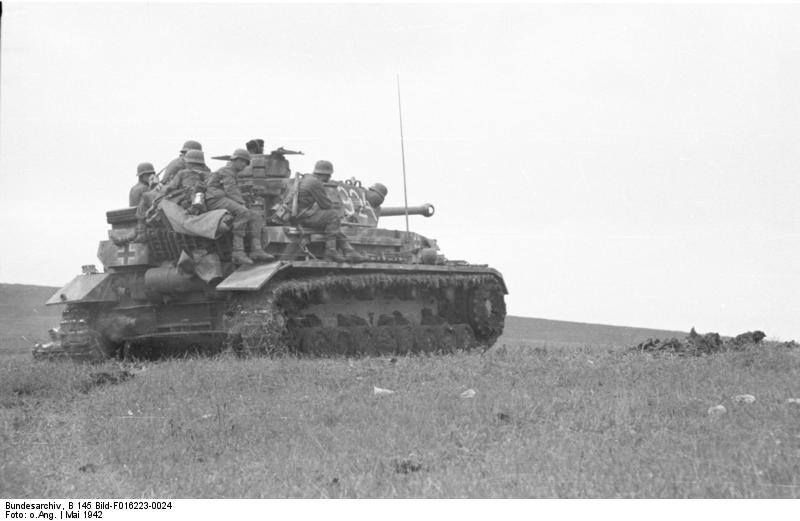
A very similar 1942 photo (though taken from the reverse angle) of a troop-laden Panzer III can be seen in the Wikipedia article on Tank Desant, a tactic (which varied from being improvised on the spot to formalized in doctrine) which involved using the outside of tanks as crude infantry carriers. This was fundamentally different from the concept of a true armoured personnel carriers because in the case of an APC the troops are inside the armour (and hence protected), whereas in the case of tank desant the troops are outside the armour (and hence dangerously exposed to enemy fire).
May 22, 1941. Crete
Royal Navy has a disastrous day off Crete. They know from Ultra intercepts that a flotilla of small vessels is carrying German troops and supplies from the island of Milos, but this is delayed by the late arrival of Italian escort (torpedo boat Sagittario). British warships search overnight but make the mistake of continuing after sunrise and come under heavy German air attack. At 0100 hours, cruisers HMS Naiad (6 killed) & Calcutta (14 killed) and destroyer HMS Kingston (1 killed) are damaged by bombs. At noon, destroyer HMS Greyhound is sunk (76 killed) and battleship HMS Warspite is badly damaged (43 killed, 69 wounded, under repair in USA until December 18). Anti-aircraft cruisers HMS Gloucester (722 killed) and Fiji (257 killed) try to fend off the Stukas but they run out of ammunition and are sunk. Most survivors from Greyhound, Gloucester & Fiji are rescued by destroyers HMS Kingston & Kandahar.
Photo: HMS Gloucester undertaking evasive manoeuvres prior to being sunk, 22 May 1941. Photograph taken from a Luftwaffe bomber (IWM (HU 24829)).
Source: worldwar2daybyday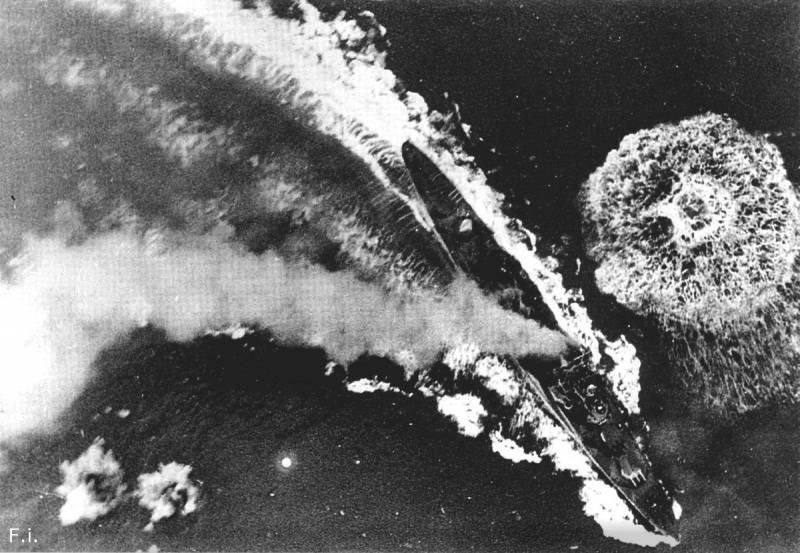
Royal Navy have stayed too long in the daylight hunting troopships: Luftwaffe dive-bombers have sunk 3 British cruisers, over 1000 dead; sky over Crete now black from burning ships.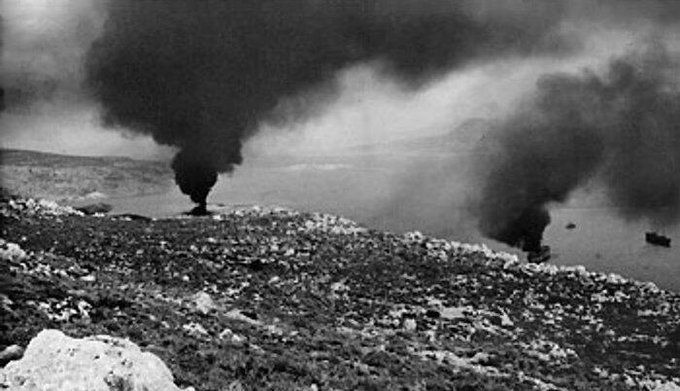
May 24, 1941: HMS Hood seen burning on the left while HMS Prince of Wales makes smoke to the right. Shell splashes can be seen falling near the Prince of Wales.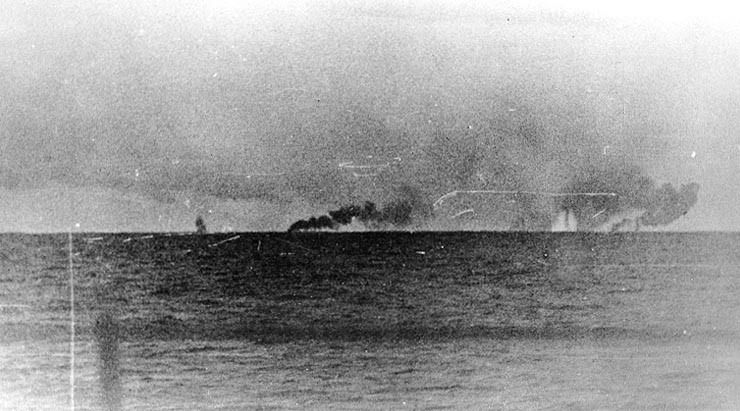
A shell from the British Battlecruiser HMS HOOD lands near the German Battleship BISMARK forming a large white column of water. The black smoke near BISMARCK indicates it has just fired a salvo on the British warships." © IWM (HU 382).
Bismarck firing on Hood and Prince of Wales, Battle of Denmark Strait, 24 May 1941, photographed from Prinz Eugen.
May 24, 1941. Battle of Denmark Strait
At 0552 hours, British battlecruiser HMS Hood and battleship HMS Prince of Wales open fire on German battleship Bismarck and cruiser Prinz Eugen from 24 km. Although they outgun the Germans, both British ships have flaws. At 0600 hours, a 15 inch shell from Bismarck penetrates HMS Hood’s thin deck armour, exploding a magazine. Hood is blown in 2 and sinks quickly (1,415 killed, 3 survivors).
HMS Prince of Wales (completed only 2 months earlier) is hit 7 times (13 killed) and retires at 0604 hours with her new guns jammed. Bismarck is hit 3 times (no casualties) but flooding in her bows and a boiler room reduces speed to 28 knots. British cruisers HMS Suffolk and HMS Norfolk continue following Bismarck and Prinz Eugen but at 1800 hours Prinz Eugen escapes South in a squall. At 2350 hours, 8 Swordfish torpedo bombers from British aircraft carrier HMS Victorious attack Bismarck (1 torpedo hits with little damage, 1 killed).
Photo: Bismarck firing on Hood and Prince of Wales, Battle of Denmark Strait, 24 May 1941, photographed from Prinz Eugen.
Source: worldwar2daybyday

@captainwalker
nice hadn’t heard of POWs guns jamming before
@barnee said in On this day during W.W. 2:
@captainwalker
nice hadn’t heard of POWs guns jamming before
There’s a kind of tragic irony to the fact that POW’s jammed in an action in which Britain’s last battlecruiser, HMS Hood, was destroyed by a spectacular explosion of its magazines. The cause of those jams can be traced back to the Battle of Jutland in 1916, in which several British battlecruisers were lost…including HMS Invincible, which also suffered a magazine explosion, and which was commanded by Admiral Horace Hood, a great-great-grandson of Admiral Samuel Hood (after which HMS Hood was named). Britain in 1916 had the world’s largest fleet of battleships and battlecruisers, but Jutland revealed a number of quality-control weaknesses on the British side. One of the problems was that ammunition and propellant hoists in the turret complexes lacked (or only had minimal; I can’t remember which) anti-flash shutters. On the plus side, this increased the rate at which the guns could fire; on the negative side, this made it possible for the blast effects of an enemy hit on a turret to propagate themselves down into the ammunition magazines. Jutland was a shock to the R.N., and it led to a number of changes. One change was that HMS Hood, then under construction, was redesigned and rebuilt, in part to give her more armour (which ultimately proved inadequate in her action against the Bismarck). Another change, however, is that the R.N. started taking anti-flash shutters more seriously. The subsequent irony is that The R.N. overcompensated: POW’s anti-flash shutters were so elaborate that they were finicky and prone to jamming. (It didn’t help that POW was a very new ship and had not fully worked up.)
@captainwalker said in On this day during W.W. 2:
May 24, 1941. Battle of Denmark Strait
At 0552 hours, British battlecruiser HMS Hood and battleship HMS Prince of Wales open fire on German battleship Bismarck and cruiser Prinz Eugen from 24 km. Although they outgun the Germans, both British ships have flaws.
HMS Prince of Wales holds the distinction of being the only British capital ship to face both the Kriegsmarine and the Imperial Japanese Navy in the first half of WW2. Unfortunately, she did not give a good account of herself, with her main guns jamming in her engagement against Bismarck and a lack of air cover and effective anti-aircraft gunnery leading to the IJN’s bombers sinking her.
HMS Prince of Wales was in commission for less than one full year, from 19 January to 10 December 1941. A tragic fate for what might have otherwise been a fine vessel.
-Midnight_Reaper
@Midnight_Reaper said in On this day during W.W. 2:
HMS Prince of Wales holds the distinction of being the only British capital ship to face both the Kriegsmarine and the Imperial Japanese Navy in the first half of WW2. Unfortunately, she did not give a good account of herself, with her main guns jamming in her engagement against Bismarck and a lack of air cover and effective anti-aircraft gunnery leading to the IJN’s bombers sinking her.
HMS Prince of Wales was in commission for less than one full year, from 19 January to 10 December 1941. A tragic fate for what might have otherwise been a fine vessel.
-Midnight_Reaper
On a brighter note, HMS Prince of Wales was one of the two ships – the other being the heavy cruiser USS Augusta – on which Churchill and Roosevelt held their first summit meeting in August 1941 at Placentia Bay, Newfoundland. The eight-point statement issued from the conference, which came to be known as the Atlantic Charter, presented the joint vision of the two leaders for the post-war world; it later inspired the United Nations Declaration which was signed by the Allied powers, which in turn later inspired the United Nations Charter. The Atlantic Conference, to which Churchill travelled aboard POW, has an partial connection to POW’s engagements with both the Germans and the Japanese. On the German side: POW’s journey to Newfoundland was her first mission after the refit which had repaired her battle damage she had suffered in her battle with Bismarck. On the Japanese side: if I’m not mistaken, one of the topics discussed by Roosevelt and Churchill was the strategic question (which the US and the UK had already been discussing for about a year) of how to reinforce British naval strength in Southeast Asia (and specifically at Singapore) against possible Japanese aggression. The general idea was that the Americans would take some of the load off the Royal Navy in the Atlantic, which would free Britain to redeploy some of its naval assets to Singapore; this ultimately evolved into the concept of Force Z, of which POW was part.
Front page of the Syracuse Herald-Journal, 27 May 1941.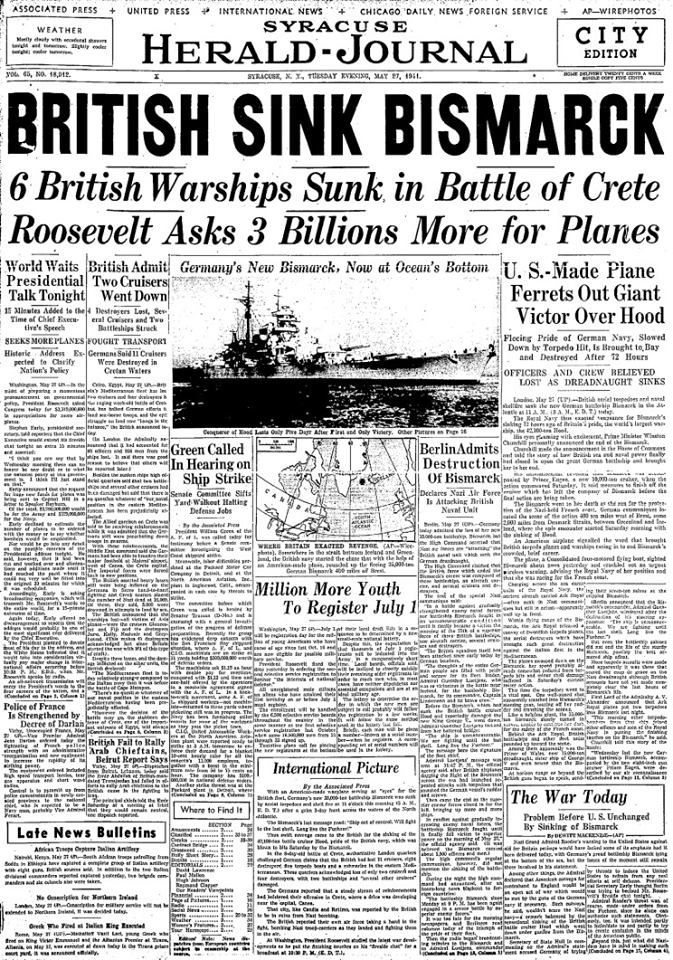
Kittyhawk fighters of the American Volunteer Group flying near the Salween River Gorge on the Chinese-Burmese border, 28 May 1942
@captainwalker said in On this day during W.W. 2:
Kittyhawk fighters of the American Volunteer Group flying near the Salween River Gorge on the Chinese-Burmese border, 28 May 1942
SWEET !
@SS-GEN very nice pic.
31 May 1942 - Japanese midget submarines from submarines I-22, I-24, and I-27 penetrate the defenses of Sydney, Australia. At 2235 hours, one mini-sub was caught in torpedo nets and was scuttled by her own crew of two (both were killed in the process). The torpedoes of the other two mini-subs near-miss U.S. heavy cruiser Chicago (CA-29), but sink RAN accommodation ship Kuttabul and damage Dutch submarine K-IX beyond economical repair. All three Japanese midget submarines were lost in the attack.
Pictured below - Cruiser USS Chicago underway in Sydney Harbor, Sydney, New South Wales, Australia, before the Japanese midget submarine attack that took place later that night, May 31, 1942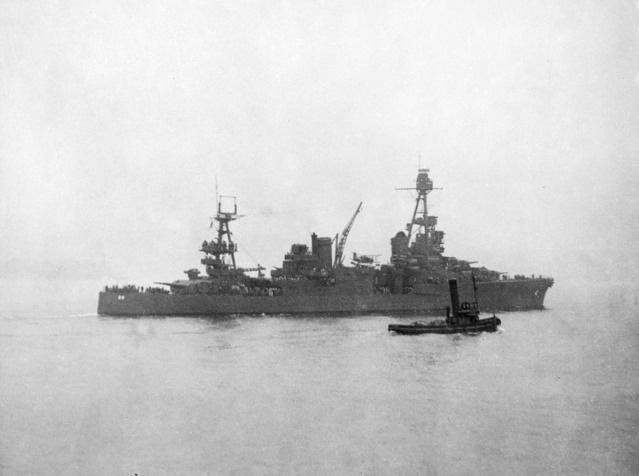
British troops crowd the deck of a Royal Navy destroyer (possibly HMS Gallant H59), arrive at Dover after sailing from Dunkirk, 31 May 1940.
Source: DB Colour
Sweetest !
US Marine Private Bruce Rutherford cleaning his Thompson submachine gun while playing with puppies Nanci, Shoto, Sake, Zero, Banzai, and Okinawa on Okinawa, Japan. June 1, 1945